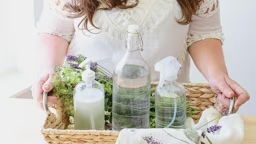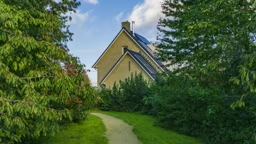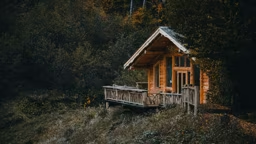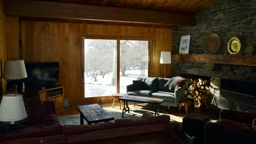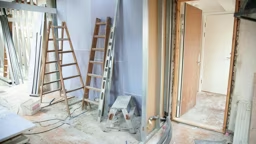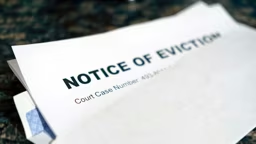
Cabins might be more durable than the average home, but they require lots of preventative maintenance. You’re bound to encounter a few problems during your years of ownership. This guide will help you diagnose and solve eight common maintenance issues with your cabin to keep it in good condition.
Rotting Wood
Rotting wood is perhaps the most common maintenance issue with cabins — especially traditional log cabins. The wood on your cabin’s exterior faces a constant battering from the elements, so it will naturally rot over time. However, you can take some effective preventative measures to slow the process down:
- Keep the gutters in good condition to ensure they drain properly.
- Prioritize the wood closest to the cabin’s foundation.
- Apply a fresh protective stain finish at least every five years to your cabin’s exterior. This rule applies to the siding, decks, furniture and any other exposed wood.
Discoloration, shrinkage, cracks and splintering are telltale signs your cabin has rotting wood. If the wood already shows these signs of damage, you need to replace it as soon as possible. Wood in such a poor condition can compromise your cabin’s infrastructure and lead to foundational problems.
Pest Infestations
Cabins are attractive homes for small critters. You might experience problems with carpenter bees, ants, termites, insects, mice and even birds. Wooden structures are natural habitats for these animals, so they will find your cabin eventually. It’s your job to prevent them from infesting the house. Closely monitor your cabin for these common signs of pest infestation:
- Small openings in the wooden exterior
- Nests in gutters, corners and other crevices
- Chewed items
- Foul odors
- Droppings
Infestations often require a professional extermination service — especially if the animals sting or bite. That’s why preventative maintenance is so important for this problem. Start by sealing up all openings with caulk, expandable foam, urethane or another cabin-friendly sealant. You must also keep the kitchen clean, sweep the house regularly and avoid leaving food sources outside.
Foundation Cracks
Foundation cracks tend to form in a house’s masonry over time. Hydrostatic pressure is the most likely culprit. The soil around your cabin expands and puts more pressure on the foundation. The moisture from the ground slowly seeps into the porous concrete and brick, weakening the walls and developing horizontal, vertical or diagonal cracks.
If left untreated, foundation cracks will cause the wall to bow inward and collapse under its own weight. Carbon fiber strapping is the simplest solution because it can straighten bows two inches or less in width and restabilize the masonry. However, more extensive repairs are necessary if the bows are wider than two inches.
Foundations experiencing severe cracking and bowing require metal wall anchors or helical tiebacks. These repairs are expensive and labor-intensive, so you must repair small foundation cracks before they get out of control.
UV Ray Damage
Even if you live in a perfect climate, your cabin is not immune to weather-related damage. Ultraviolet sun rays can damage the exterior over time. It burns through protective finishes and leaves the wood exposed to moisture, pests and rotting. If your cabin’s exterior looks too dry, it probably is.
Preventing sun damage calls for a spar varnish protective finish instead of a standard staining solution. Unlike regular varnish, spar varnish improves the wood’s flexibility and resilience to sunlight. Maintaining the wood’s flexibility is crucial because it needs to stretch and contract as humidity levels change.
Sagging Floors
Sagging floors occur when floor joists loosen up, often due to high indoor humidity and exterior waterproofing deficiencies. You have to control your cabin’s climate to prevent this maintenance issue because there aren’t any DIY solutions. Once the floors begin to sag, it will worsen until you bring in a professional repair service.
Sagging floors can also lead to the aforementioned foundation issues, so you need to solve the problem in its early stages. Along with controlling your cabin’s climate, you can add extra blocking or metal bridging to support the floor joists.
Hard Water
If your cabin has well water, you might have noticed it tastes different from regular tap water. That’s because well water has a higher mineral content than filtered tap water. Higher mineral content is a good thing in moderation, but sometimes it can lead to an issue called “hard water.”
Hard water tends to cause mineral buildups in the pipes and decrease water pressure. It might also cause damage to shower heads, washing machines and other appliances. To prevent your cabin’s water from becoming too hard, use a water softener or water filtration system to remove excess minerals.
Mold Growth
Mold is a common cabin maintenance issue because it thrives in damp places. Cabins can fill up with moisture once the exterior protective sealants fade away — another important reason to re-apply your finishes every few years. However, even a weatherproof sealant can’t save your cabin from poor ventilation.
Poor ventilation is the other main ingredient mold needs to grow. You need to create steady airflow and keep the humidity levels down at all costs. Maintaining ventilation can be difficult if you infrequently use your cabin, so you might have to hire a cleaning service or ask a neighbor to air the place out regularly.
Musty Odors
Cabins tend to develop a musty smell as they get older. There are two main reasons for this maintenance issue — the high number of organic materials and high humidity levels. Organic building materials like wood and cloth attract moisture, which leads to higher humidity and that distinct musty smell.
A musty smell isn’t a big issue on its own, but it can be a sign of other forms of damage. Mold could be the source of the odor. Ceiling beams, floor joists or other essential parts of your cabin’s foundation could also be taking on too much moisture. Constant dehumidification is the key to avoiding the smell and minimizing water damage.
Practice Diligent Cabin Maintenance
It’s impossible to be perfect with preventative maintenance, but you can get pretty close by keeping up with these eight tasks. Mitigating the most significant threats will give you more time to focus on smaller decorative details. Your cabin is a valuable refuge, so take your maintenance responsibilities seriously and always stay alert.



